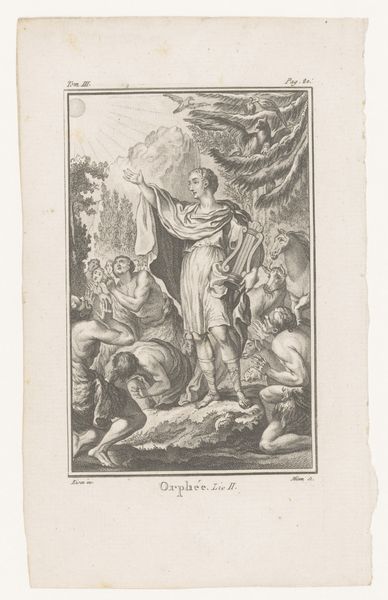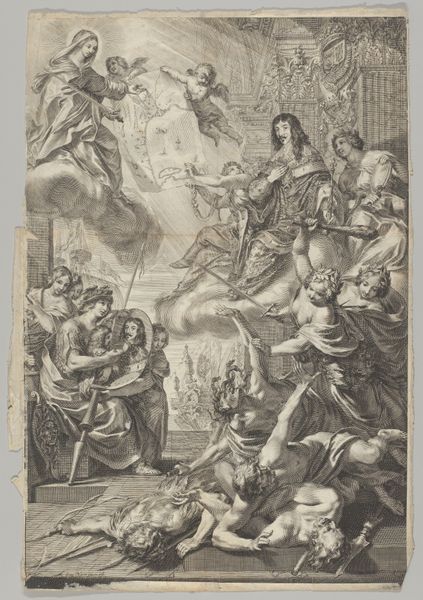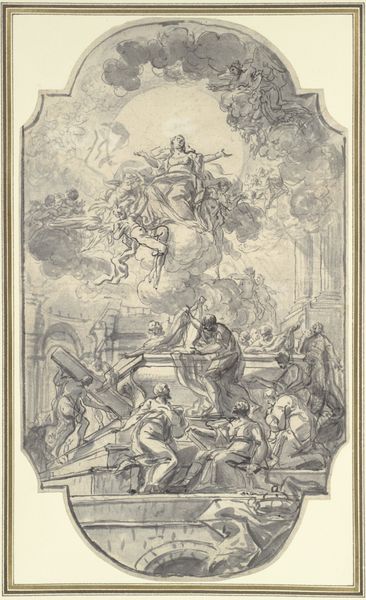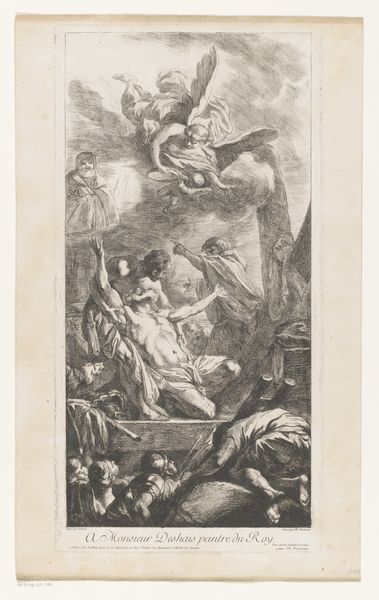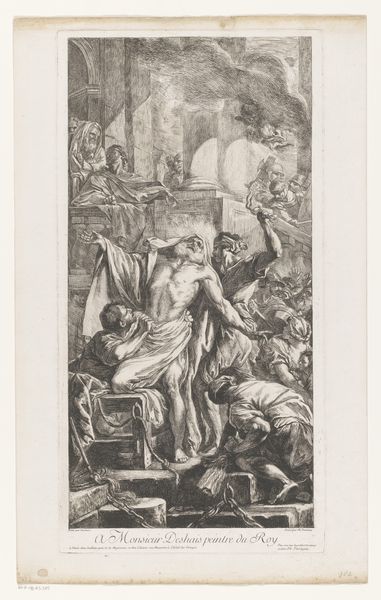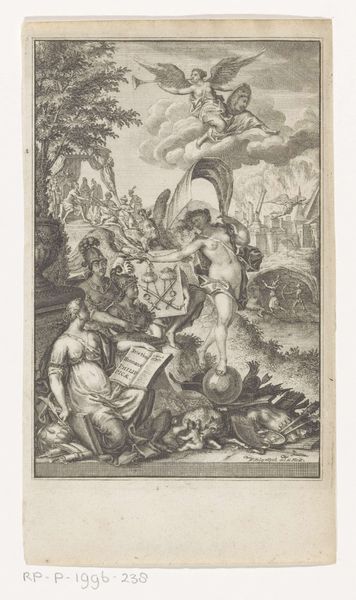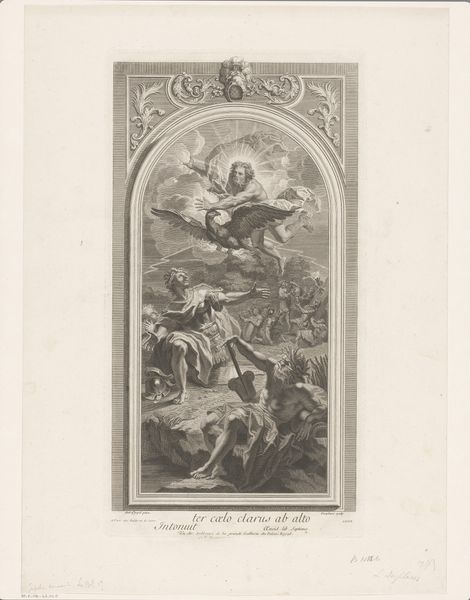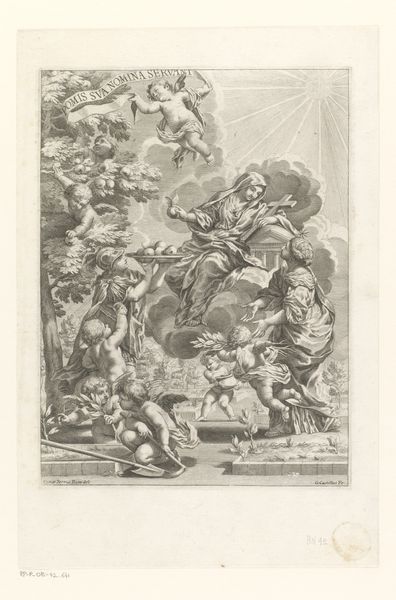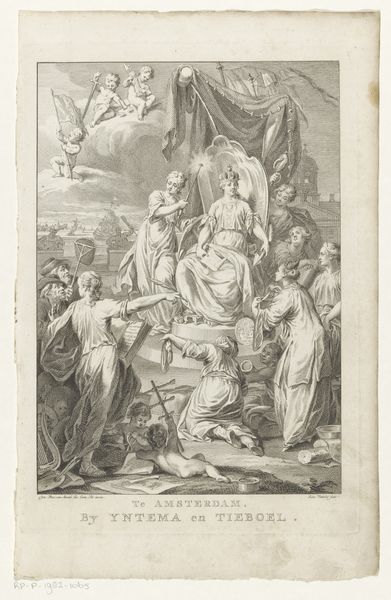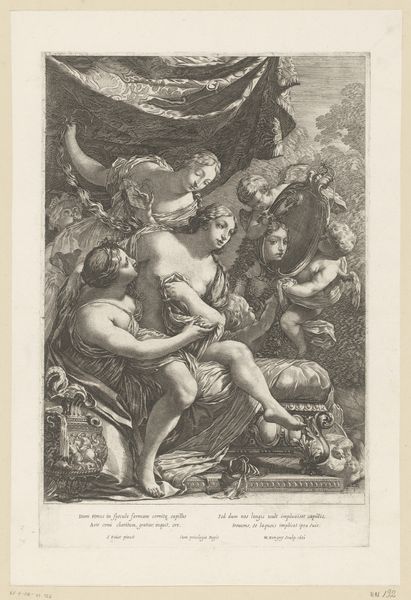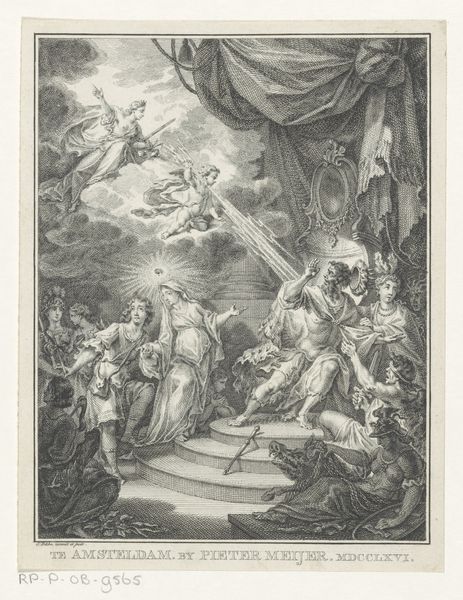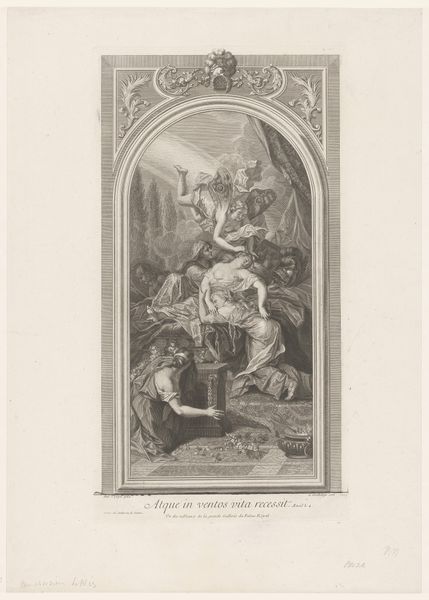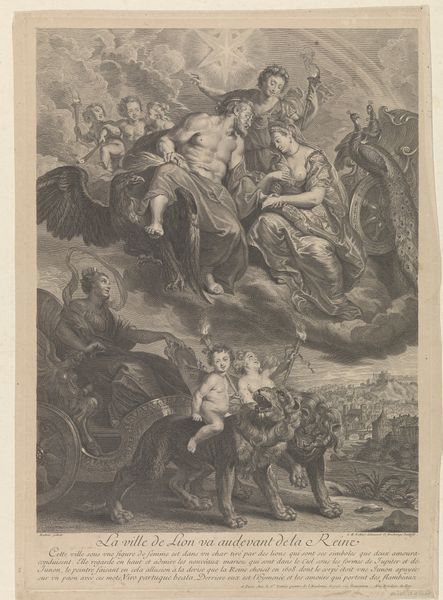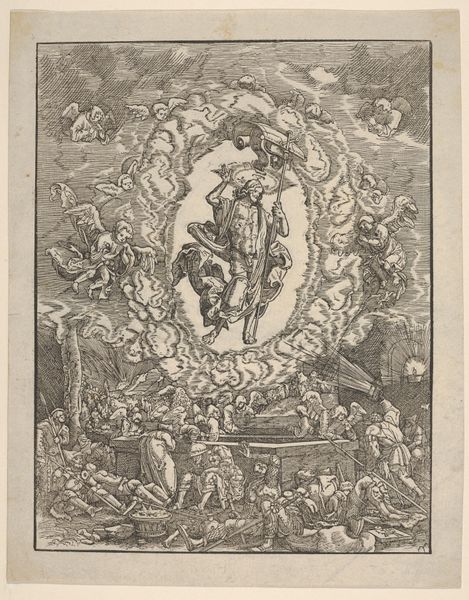
engraving
#
portrait
#
pencil drawn
#
allegory
#
baroque
#
pencil drawing
#
cityscape
#
history-painting
#
engraving
Dimensions: height 630 mm, width 460 mm
Copyright: Rijks Museum: Open Domain
Curator: Laurent Cars created this engraving around 1730; it's titled "Louis XV Brings Peace to Europe." Editor: What immediately strikes me is how busy it is, a whirlwind of classical allegory swirling around the central figure, evoking a sense of dramatic baroque grandeur. Curator: Absolutely. This piece reflects the political climate of the era. The engraving functioned as a form of state propaganda. It's less a portrait of Louis XV himself and more about creating and solidifying an image of benevolent leadership. The monarchy constantly had to shore up the image it projected to the populace. Editor: You see it so clearly. To me the symbolism is palpable: The laurel wreath being presented to Louis symbolizes peace, and it's placed prominently by a female figure, often associated with grace and diplomacy. The children below are playing with a globe which represents worldly possessions or lands he governs. But why surround him with these celestial beings? Curator: The heavenly figures—the goddess with a spear and the figure with the horn of plenty are more symbols of military strength, stability and the bountiful blessings of peace. They're designed to inspire the viewer. By associating Louis XV with these archetypes, it reinforces the idea of his divine right and his role as a protector of the realm. It visually elevates him, lending him a kind of timeless authority. Editor: So much cultural expectation is encoded. The artist’s rendering gives us such insight into their mindset at the time. I can see how that ties into Baroque sensibilities, the ornamentation suggesting power and grace simultaneously. Curator: The engraver, Cars, held a unique position, skillfully toeing the line between artistry and political objectives. Through engravings, the monarchy ensured its messages were visually compelling and accessible. By employing allegory, they aimed to resonate deeply with people’s cultural and historical consciousness, constructing a powerful narrative. Editor: What becomes evident to me is how prints like this one were designed not only to be viewed, but also to be "read" on multiple levels, layers of meaning carefully built up and disseminated. Curator: Precisely. Analyzing this engraving from a social history angle illuminates how artworks actively shaped and manipulated public perception during this time, which I find rather fascinating. Editor: I am intrigued, especially seeing how symbols are strategically deployed for political messaging; that brings a whole new significance to viewing the image!
Comments
No comments
Be the first to comment and join the conversation on the ultimate creative platform.
